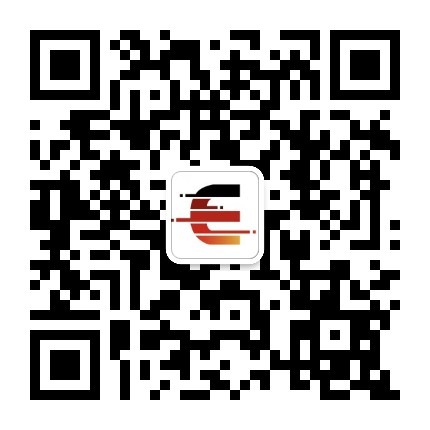 Training
Training
Profile
Course background:
Environmental monitoring is a commonly used application field of embedded application systems. This lesson mainly explains how to use Arduino with various types of sensors to sense the surrounding environment.
Core content:
1. Definition and classification of sensors
2. Use of temperature sensors
3. Use of light sensors
4. Use of humidity sensors
Software environment: Arduino IDE, Fritzing
Course level: Elementary
Suitable for people:
zero-based embedded, Internet of Things, Intelligent hardware development enthusiasts
Chapters
Chapter 1:1 Analog-to-digital conversion for Arduino (7 minutes and 39 seconds)
Chapter 2:2 Use Arduino to monitor indoor temperature (7 minutes and 57 seconds)
Chapter 3:3 Use Arduino to detect indoor light intensity (4 minutes and 50 seconds)
Chapter 4:4 Use Arduino to detect humidity (3 minutes and 37 seconds)
You Might Like
Recommended Posts
- MSP430 driving 74HC595
- Use MSP430 to drive 74HC595. Below is the main program. P2.0 is serial data input, P2.1 is RCK, and P2.2 is SCK. Assuming the serial input is 01010101, why can't I measure the voltage on the parallel
-
jinger0311
 Microcontroller MCU
Microcontroller MCU
- The internal crystal oscillator of STM32F103ZE cannot be used?
- The ST3210E-LK development board is used for the test. The development environment is EWARM 5.0. There is no problem with the program started by the external crystal oscillator, but it cannot be used
-
babyspider
 stm32/stm8
stm32/stm8
- Negative high voltage chip or solution
- Hello everyone, due to recent demand, I need to use a chip with adjustable voltage output from -150V to -300V, and a few milliamperes of current. It would be best if it is an automotive-grade chip. Wh
-
轩辕默殇
 Power technology
Power technology
- Question: How to develop 16C554 driver on WinCE5.0 platform based on s3c2440?
- Ask: How to develop 16C554 driver under WinCE5.0 platform of s3c2440? I have developed a simple 2x2 keyboard driver under WinCE. What reference materials should I use? Please recommend suitable books
-
archao
 Embedded System
Embedded System
- A brief discussion on processes and threads
- Communication between processes includes pipes (unnamed and named), message queues, shared memory, semaphores, signals, and sockets. Resource protection mechanisms between threads include: unnamed sem
-
Jacktang
 DSP and ARM Processors
DSP and ARM Processors
Recommended Content
Web users are watching Change
- MSP430 driving 74HC595
- The internal crystal oscillator of STM32F103ZE cannot be used?
- Negative high voltage chip or solution
- Question: How to develop 16C554 driver on WinCE5.0 platform based on s3c2440?
- A brief discussion on processes and threads
- IC card electronic voice book
- Light Sabers and Light Sabers Made with CPX
- Frontier Silicon DAB/FM/AM Radio and CD Music Platform
- 12-bit Analog Monitoring and Control Solution
- Analog Filters and Regulatory Analysis
- Synchronous Dual-Port RAM Module
- ARM program (compile assembly link).pdf
- The Woods We Passed Through During Those Years (3) Part 2
- Where can I buy YH42BYGH60 405A
- Porting application source code developed based on ANSI C to Windows CE
- Talent gap emerges, embedded software development technology training heats up
- An embedded learning problem
- How far is driverless technology from here? Let’s start with Atmel Avant Car
- Germany develops instrument that can "smell" the ripeness of fruit
- How to solve this error?
- [Take a break from work to learn ufun_11] Chip unique ID reading - can be used for encryption
- Please advise on the size of SDRAM
- Where can I find the driver code for this LCD?
- Introduction to the Internet of Things: 9 Key Things to Know About IoT
- Design a power automatic switching circuit
- Looking for a BOOST circuit that boosts 3.7v to 9v or 12v
- A few tricks about the microcontroller serial port. I hope you can use them.
- Free Download: ADI Servo Motor Control Solutions
- E2 studio automatic code generation help
- A student in Hefei's "excellent" college entrance examination essay was exposed: 2009 Anhui college entrance examination essay "Overtaking on the bend"
Popular Components
Just Take a Look
Hot Downloads
- Double-sided board wiring tips
- Panasonic TC-29GF35G color TV circuit diagram
- Single chip integrated analog switch keyboard
- Operating system experiment - process synchronization and mutual exclusion code
- HIPERLAN/2 physical layer standard
- High-precision AD converter based on single-chip microcomputer
- Teacher Yao\'s \"AlteraFPGA Selection and Development\"
- OV420 datasheet
- Research on high brightness white LED DC lighting
- VHDL state machine design and test platform
MoreHot Articles






 京公网安备 11010802033920号
京公网安备 11010802033920号